By Isaac Lorton
When the fields are covered in snow and icicles hang from the barns, what happens on a farm? How does one get local organic vegetables and greens at winter farmers’ markets? Or at co-ops? Or at CSAs?
Many Upper Valley farms continue to grow and produce food long after the first frosts and well before the last snow melts.
For some, like Deep Meadow Farm in Ascutney, they grow organic veggies all year long and have a deep winter CSA. With the use of heated greenhouses and hoophouses, Deep Meadow Farm owner Jon Cohen is able to continue growing hearty greens like spinach and kale throughout the blustery depths of winter. When asked about the “off-season,” he laughed and said, “There is none.”
These greens are supplemented with root vegetables like potatoes, carrots, beets, onions, and celeriac that are harvested in late October and early November, but store well and last throughout the winter. [Fun fact: Though in the same family, celeriac is not just the root of the common stalked celery (as I initially thought), but rather is cultivated specifically for its root base during cooler months.] At Deep Meadow, these veggies are sold up and down the Connecticut River Valley — from the Brattleboro and the Norwich Winter Markets to grocery stores.
“We’re usually done by the end of November harvesting all of our storage crops out of the field,” Jon said. “We have a large storage capacity. We do 50 acres of vegetables. I just got done cleaning off our last crop of beets that was harvested back in late October. So that’s what we do. We’re cleaning and washing stuff all winter long, so we have stuff available.”
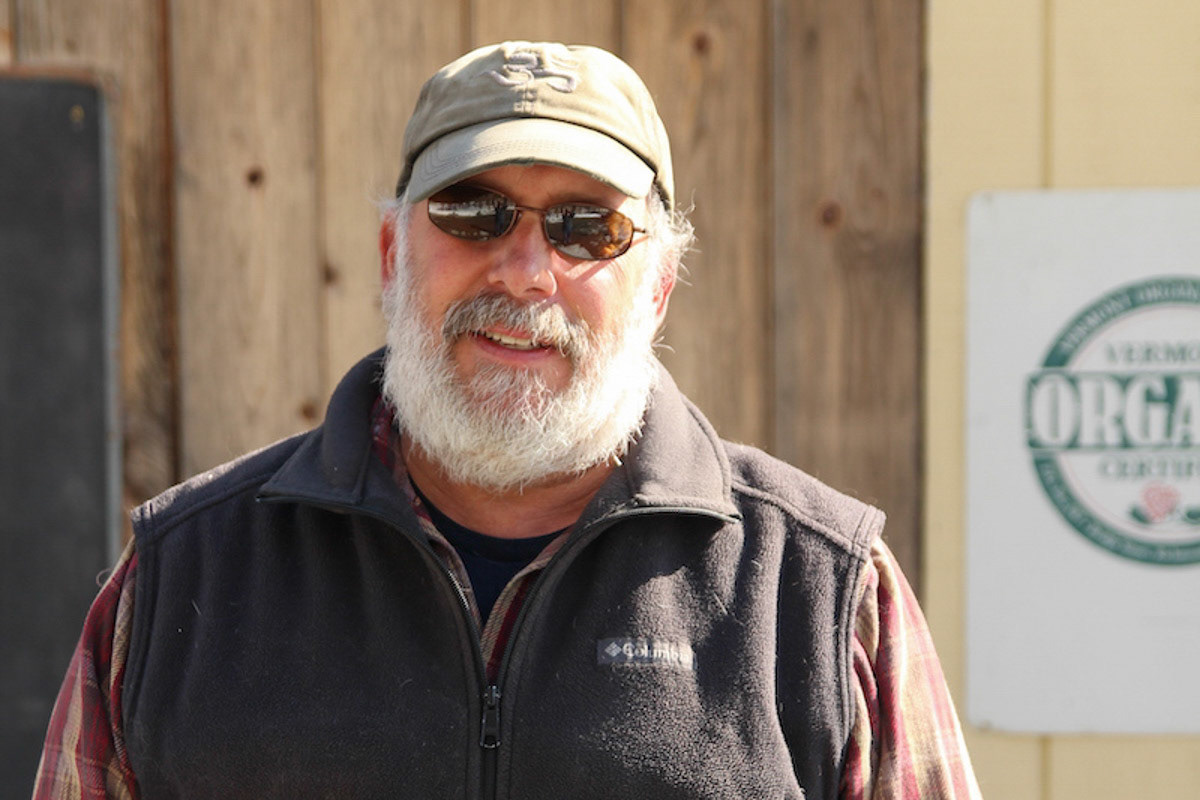
Jon Cohen - Photo by Isaac Lorton
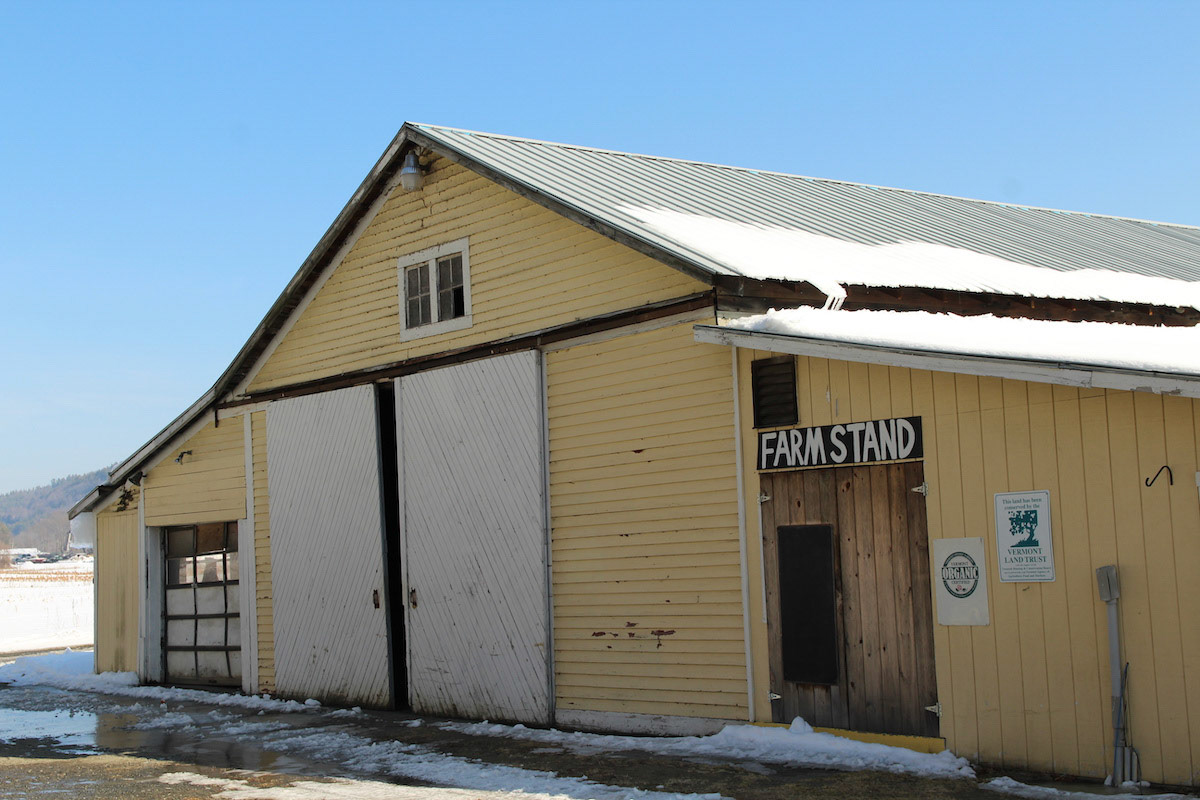
Photo by Isaac Lorton
Not all farms grow vegetables the entire winter. Some, like Root 5 Farm in Fairlee, extend their growing season with greenhouses and hoop houses and only take the month of February “off.” Danielle Allen and Ben Dana — the husband and wife duo who own Root 5 Farm — run their CSA until the end of December and begin again in March. One greenhouse is heated while the other three hoop houses are not.
“We have a wood pellet heater for the greenhouse so that we can do all of our propagation because all of those seedlings want to be consistently at 60 degrees minimum,” Danielle said. “So we really just use the unheated ones for season extension. There will still be snow on the ground out here in March and early April but we’ll be able to prepare beds inside those tunnels and plant things six weeks earlier than we would be able to in the fields. It’s just a way for us to get a little jump on the season in a climate like this.”
Glasses and camera lenses fog up when going from 20 degrees outside to the balmy 80 degrees inside the greenhouse. Ben works on the electrical system for the circulation fans. They recently expanded their greenhouse. They’ve added an automated system to regulate temperature and humidity by cranking the sides of the greenhouse up and opening vents. The work is all part of their “infinite list” to keep getting better and make their lives easier for when they go back to toiling in the soil. “It’s not all just us dragging our bodies through the undergrowth,” Ben said.
“We have this mentality of continual improvement,” Danielle said. “Always looking at ways that we can refine our systems, and that comes in this time of year when we’re not running around trying to keep the plants alive and keep our crew happy. We have this moment to reflect and figure out: how can we make this better next year? I can’t imagine farming in any other climate. Like if we were in California or some place where they just don’t have that break in the season. This is the way that we have survived in this crazy career. This month of February is great.”
In the “off-season” Danielle and Ben go over growing notes and customer feedback in order to purchase seeds for the upcoming season.

Ben Dana and Danielle Allen - Photo by Isaac Lorton
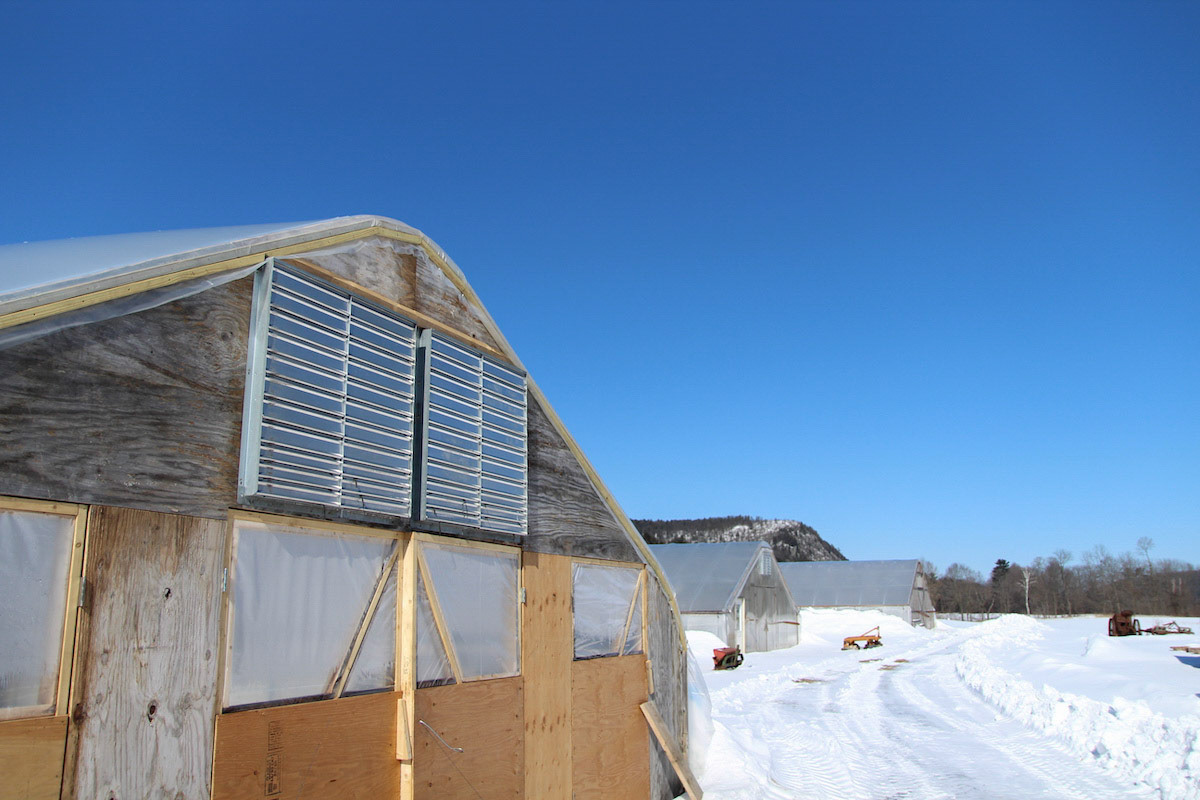
Photo by Isaac Lorton
“We take a lot of notes throughout the season,” Danielle said. “We are observing what’s working well and what’s not working well in terms of growing, and quality, and taste, and all of the factors on our end. When we bring it to the farmer's market is when we get the most direct feedback from customers. You know, they come back every week because they love this thing that they can’t get anywhere else.”
Some CSAs do not carry over into the winter, like Norah Lake’s Sweetland Farm in Norwich. Rather, she doubles down on the winter and goes to Alaska (her husband is an ice and snow scientist). But even in Alaska, Norah goes through her “gigantic” spreadsheets, pouring over seeds to order. In the winter, Norah contemplates whether or not to dial back on the fennel or to up the jalapeno peppers.
“I’m going through saying, ‘Do we really need 2,000 Atlantis broccoli plants?’ Okay, the spreadsheet says we do,” Norah said. “Winter for me is a lot of planning for the next season and also kind of looking over what went down last year. What worked well that we want to repeat and what do we want to tweak a little bit. I call it ‘farming from the desk.’ It’s more of the big picture, philosophical, and planning of items than I get to do over the summer. Summer — it’s pretty full tilt in the field. I often find myself scribbling down notes on the back of envelopes to remind myself to look at things in the winter.”

Photo by Isaac Lorton
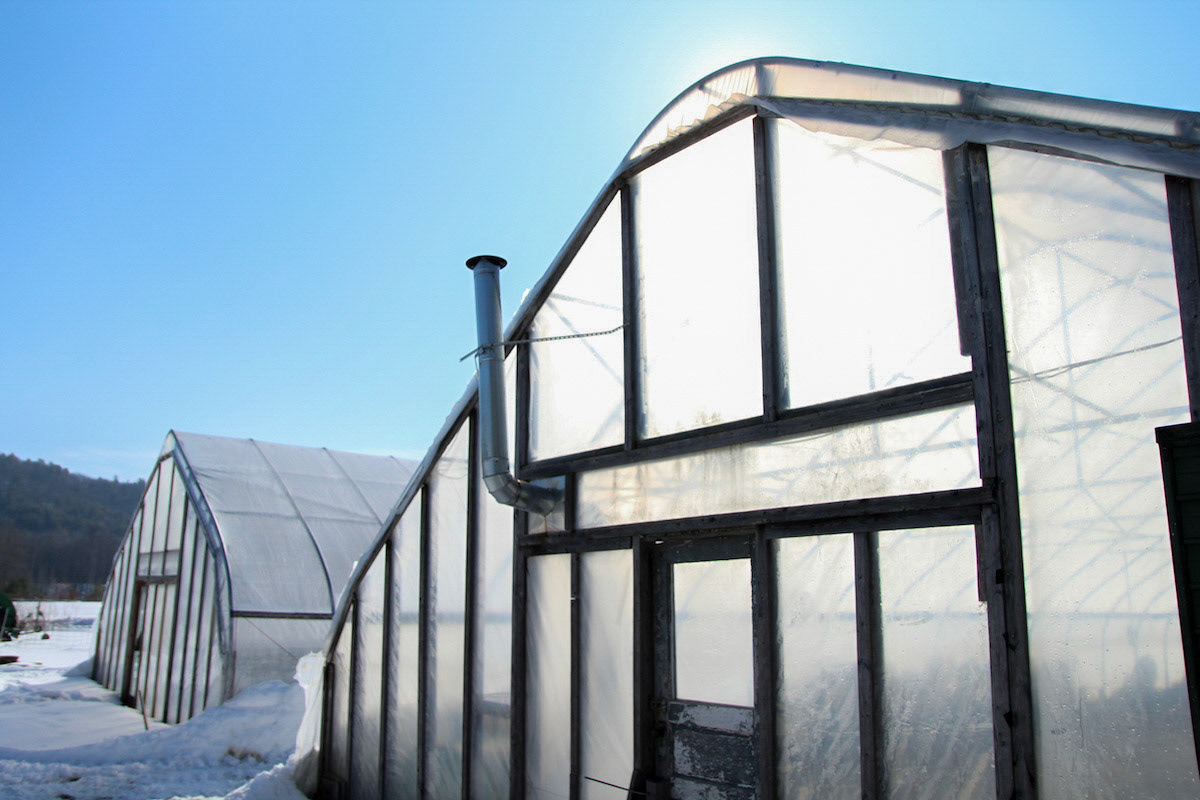
Photo by Isaac Lorton
Norah enjoys seed research and purchasing and “if nothing else, this time of year, it’s fun to ogle the beautiful color photographs of fresh vegetables.” Sometimes she stumbles onto something.
“There’s a bean called red noodle.” Norah explained. “Last year I had grown it specifically for decoration. It’s this funny really, really thin, probably like two-foot long squiggly bean, and I had seen it in the seed catalog and thought, ‘That’ll be fun. I’ll grow it so that it climbs up the fence and be decorative.’ Lo and behold, I saw some of our shareholders out there harvesting it one day. I went and asked them about it and they said, ‘This is a delicacy and we can’t find it anywhere!’ So I upped the numbers on our spreadsheet a little bit this year because it was new to me that it was actually edible.”
CSAs often introduce people to new vegetables or new ways to cook vegetables. Most CSA farmers like this aspect of the job. Norah gathers recipes for the customers and puts them in her weekly newsletter.
“I really love every week getting creative and surfing through the web to find what looks like the most appetizing thing that’s going to be done with kohlrabi or with carrots or with winter squash,” Norah said. “The possibilities are endless.”
Root 5 Farm has their own favorite unique vegetables. Danielle explained, “We grow ginger and tumeric, which are pretty unusual for this region because they’re really heat loving tropical plants, and we can grow them in our tunnels. They’re wonderful. We sell them fresh when they’re available. With any excess, we make our kimchi and sauerkraut that you see in the co-ops. We make a turmeric sauerkraut and ginger kimchi.”
Ben added, “endives,” which Root 5 Farm has available in the early spring due to its long and complicated growing process.
“Endives are this bizarre thing,” Ben said. “You grow this plant. It’s a little bush basically. And is a big leafy dandelion. You grow the whole season — 100 something days, then you take it out, chop the top off, and put the root in a cooler. You hold onto that. Then you put it in the dark in soil and you force it. It grows a blanched, totally different looking, leafy thing.”
Jon of Deep Meadow Farm doesn’t have a “favorite” vegetable or recipe, per se. He likes all of it. He explained, “I started farming because I like to eat food. I wasn’t born into farming. I grew up in a suburban neighborhood. For me it was all about food and how do I get the independence of growing my own food. That’s where it started in many many ways."
Photo by Isaac Lorton
“As soon as those first greens come out, it’s salads and beautiful stir frys. It’s just wonderful. Then eating through the seasons. After that, we’ve got asparagus, and then we’re into strawberries. Then we’re into our summer vegetable and tomatoes start. I don’t know if there is a recipe, but just the ability to have fresh produce available.”
Though farming has its host of challenges — especially in the winter — Jon, Danielle, Ben and Norah all agreed that it is extremely rewarding.
“It’s a challenge. It’s a puzzle. I’m fully integrated into the rhythm of nature, except to the extent that we’re manipulating it as farmers, but I follow the seasons,” Jon said. “I have a natural rhythm to my life. I like that. I like solving the puzzles. I like creating the systems. I like growing food. I like feeling like I make a difference.”
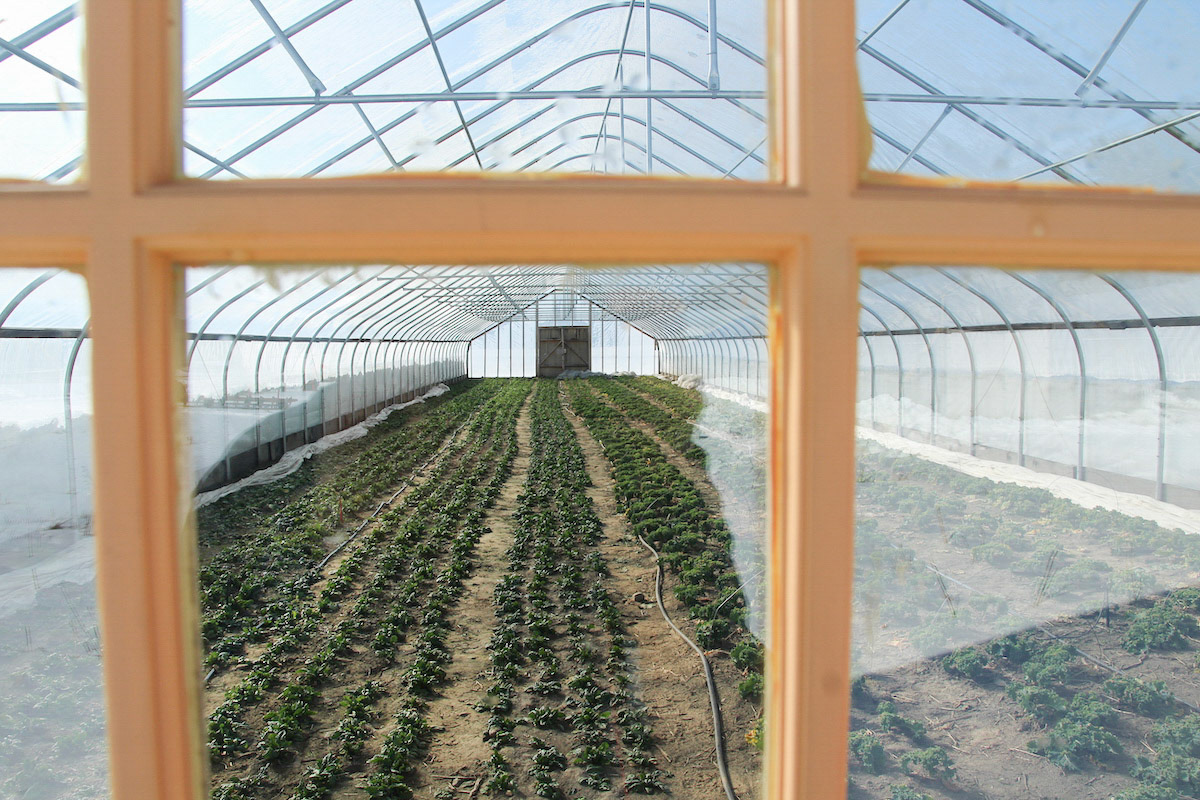
Photo by Isaac Lorton

Photo by Isaac Lorton
Danielle worked at farms in high school and college as summer jobs, met Ben at a community farm, and thrives on the “level of work” farming takes.
“I didn’t grow up on a farm, but it was what I chose to do for work when I was learning how to work,” Danielle said. “I just loved it. I loved the combination of working outside, working with the elements, and the challenge of it. There’s never a dull moment. There’s always something to figure out.”
Norah likes how much farming challenges all the different parts of her.
“There’s a really great balance of physical work, number crunching, planning, and also more of the heart part,” Norah said. “The philosophy of being a local sustainable farmer. It scratches all of those itches for me.”
To learn more about the farms, follow the links to their websites.
Deep Meadow Farm - Ascutney
Root 5 Farm - Fairlee
Sweetland Farm - Norwich
National CSA Day - Friday, February 28th
February, 2020
Isaac Lorton is thrilled to be writing, editing, and photographing in the Twin State region. Simply, Isaac is happy to be here in this place at this moment with this group of people.
